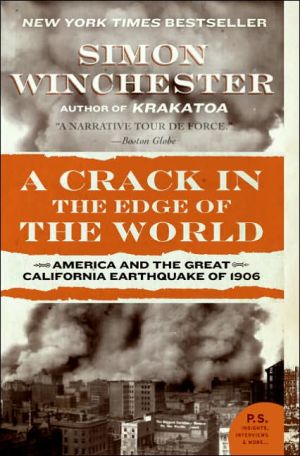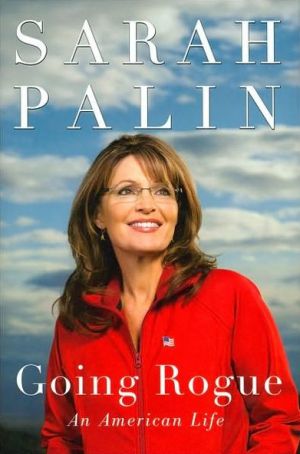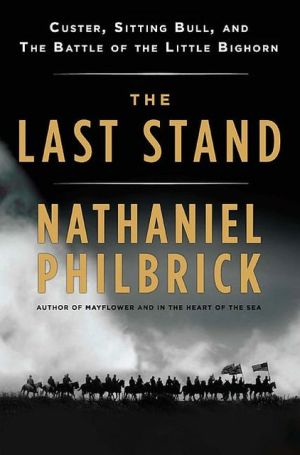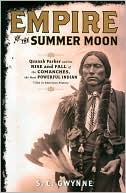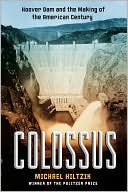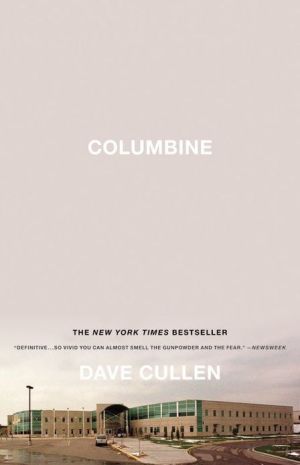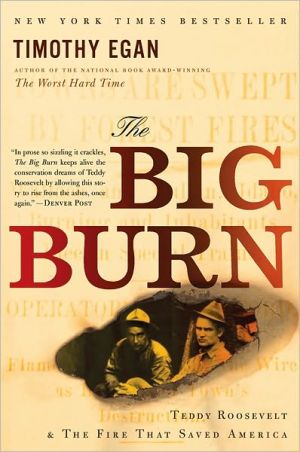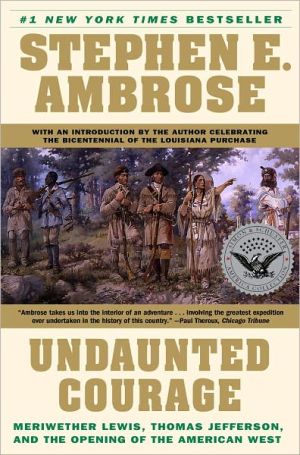Crack in the Edge of the World: America and the Great California Earthquake of 1906
Unleashed by ancient geologic forces, a magnitude 8.25 earthquake rocked San Francisco in the early hours of April 18, 1906. Less than a minute later, the city lay in ruins. Bestselling author Simon Winchester brings his inimitable storytelling abilities to this extraordinary event, exploring the legendary earthquake and fires that spread horror across San Francisco and northern California in 1906 as well as its startling impact on American history and, just as important, what science has...
Search in google:
The New York Times bestselling author of The Professor and the Madman and Krakatoa takes an adventurous and informative look at earthquakes, as seen through the devastating quake in San Francisco in 1906. The New York Times Book Review - Bryan Burrough …this is not a straightforward account of the earthquake and subsequent fire but a first-person melange of geology textbook and travelogue grafted onto a recounting of the events that destroyed San Francisco 100 years ago next spring. It's a proudly idiosyncratic book…that places Winchester firmly in the category of author-as-raconteur…Maybe the problem is false advertising…subtitling [the book] America and the Great California Earthquake of 1906 suggests not only a new narrative history but an analysis of how the quake changed the country. That's not here. What is here—consuming half the book, in fact—is a geology treatise delivered by a roguish old professor who is simply gaga for granite. Winchester has some obvious faults, but lack of enthusiasm isn't one of them.
A Crack in the Edge of the World\ America and the Great California Earthquake of 1906 \ \ By Simon Winchester \ HarperCollins Publishers, Inc.\ Copyright © 2005 Simon Winchester\ All right reserved.\ ISBN: 0060571993 \ \ \ \ Chapter One\ \ \ Chronicle: A Year of Living Dangerously\ \ April, April,\ Laugh thy golden laughter;\ Then, the moment after,\ Weep thy golden tears!\ \ Sir William Watson, "April," 1903\ So far as the ancients of china are concerned, 1906 was a year of the Fire Horse -- a time of grave unpredictability that comes along every six decades, and a time when all manner of strange events are inclined to occur. So to the seers and the hermits in their faraway mountain aeries such events as unrolled during the year would have come as no surprise. The rest of humankind was less well prepared, however, and were caught unawares. And what instruments we have agree that, so far as matters of the earth were concerned, 1906 was, yes, a very bad year indeed.\ At least it was bad seismically speaking, being a very violent and a very lethal year. And the flurry of activity that marked what the numbers show to have been among the most ill behaved of times of the entire century began in the morning of the last day of January, when there was an enormous earthquake under the seabed of the Pacific Ocean.\ It is said today to have been the greatest and most powerful earthquake that had until that moment ever been registered by the machines of humankind, and it struck a score of communities along the South American coast, devastating towns, inundating fields, and causing huge waves to tear out into the open ocean. Its shaking lasted for more than four minutes, and as many as 2,000 people are thought to have died in the disaster. Scores of thousands were injured and made homeless, and countless villages and at least one major port city were totally destroyed. The effects of the huge traveling sea waves from the event were felt as far away as San Diego, and in Honolulu Harbor in Hawaii all the steamboats waiting at anchor were spun around and carried upward on an enormous tsunami, which ebbed and flowed like a tide every few minutes, bringing confusion and alarm in its wake.\ The epicenter of this earthquake, whose details are still pored over, is now calculated to have been some eighty miles due west of a prominent headland known as El Cabo de San Francisco, in Ecuador.\ The town that was all but destroyed -- but which has since been rebuilt, only to be damaged many times subsequently -- was the island port of Tumaco, now a prominent oil terminal. But in 1906 it was a place where fishermen brought in sizable catches of tuna and sardines, and where traders hawked bales of rubber and pallets of cinchona bark, ready to be pressed for quinine. Tumaco is some thirty miles north of the Ecuadoran frontier, in Colombia.\ Both Ecuador and Colombia suffered grievously from the earthquake, and even today people in the villages by the mangrove swamps of the estuaries speak fearfully of the morning when several hundred miles of their coastline, from the port of Guayaquil in the south to Buenaventura in the north, were devastated by the power of the water and the four minutes of ground shaking. Seismologists working in the 1930s, when Charles Richter created his scale of magnitude, estimated that the Ecuadoran-Colombian Earthquake of 1906 had a magnitude of 8.4, as high as anything then known; new calculations today suggest an even greater magnitude, of anything approaching 8.8 -- as bad a disaster as could possibly be imagined, whether it rated 8.4 or 8.8 or somewhere in between, for the two young republics struggling to their feet.\ But the earth wasn't done yet. Sixteen days later there was another very large earthquake, this time on the island of St. Lucia, one of the four specks of Caribbean limestone, sand, and coral that make up what was then the British crown colony of the Windward Islands. According to interpretations of the damage data made in the 1970s, it rated somewhere between VII and VIII on the magnificently named Medvedev-Sponheuer-Karnik Earthquake Intensity Scale. Just as with the Ecuadoran event of the month before, this February earthquake had its epicenter in the sea too, somewhere off the northeastern tip of St. Lucia, and about twenty miles south of the French possession of Martinique.\ This event, which collapsed buildings on both St. Lucia and Martinique, and which was felt by the populations of other islands in the eastern Caribbean, including Dominica and Grenada and St. Vincent, did not kill anyone. But it triggered a burst of smaller earthquakes -- probably a swarm of so-called volcanic earthquakes, which tend to occur when spurts of magma force their way up into the earth's upper crust, after the crust has been weakened by a deeper earthquake that has been caused by the movement of tectonic plates. This wave of lesser earth movements went on for two or three weeks, and for a while the placid life of an island whose people produced, according to the Colonial Office report of the time, a heavenly confection of "sugar, rum, cocoa, coconuts, bananas, bay oil, bay rum, spices and sea island cotton" was dangerously interrupted. The colonial governor, who had his headquarters in Grenada, was alerted, and a Royal Navy warship was dispatched from the squadron in Bermuda. Assistance was offered, assessments were made, and St. Lucia was from that moment on formally designated an earthquake-prone territory, risky enough to be of note but not sufficiently dangerous to be abandoned.\ Still it was not over. Five days later a tremendous outbreak of ground shaking occurred in Shemakha, an ancient town of mosques and temples . . .\ \ Continues...\ \ \ \ Excerpted from A Crack in the Edge of the World by Simon Winchester Copyright © 2005 by Simon Winchester.\ Excerpted by permission.\ All rights reserved. No part of this excerpt may be reproduced or reprinted without permission in writing from the publisher.\ Excerpts are provided by Dial-A-Book Inc. solely for the personal use of visitors to this web site. \ \
\ From Barnes & NobleThe story of the great San Francisco earthquake of 1906 has been told and retold by dozens of writers. Few of these authors, though, have possessed the narrative gifts or the scientific credentials of Simon Winchester. The author of Krakatoa and The Professor and the Madman is an Oxford Universitytrained geologist. He renders the cataclysm not merely as a one-minute earthquake followed by three days of deadly raging fires but as a geological event of lasting significance.\ \ \ \ \ Bryan Burrough…this is not a straightforward account of the earthquake and subsequent fire but a first-person melange of geology textbook and travelogue grafted onto a recounting of the events that destroyed San Francisco 100 years ago next spring. It's a proudly idiosyncratic book…that places Winchester firmly in the category of author-as-raconteur…Maybe the problem is false advertising…subtitling [the book] America and the Great California Earthquake of 1906 suggests not only a new narrative history but an analysis of how the quake changed the country. That's not here. What is here—consuming half the book, in fact—is a geology treatise delivered by a roguish old professor who is simply gaga for granite. Winchester has some obvious faults, but lack of enthusiasm isn't one of them.\ —The New York Times Book Review\ \ \ Publishers WeeklyIn this brawny page-turner, bestselling writer Winchester (Krakatoa, The Professor and the Madman) has crafted a magnificent testament to the power of planet Earth and the efforts of humankind to understand her. A master storyteller and Oxford trained geologist, Winchester effortlessly weaves together countless threads of interest, making a powerfully compelling narrative out of what he calls "the most lyrical and romantic of the sciences." Using the theory of plate tectonics introduced in 1968 by an obscure geologist, J. Tuzo Wilson, Winchester describes a planet in flux. Across the surface of the earth, huge land masses known as plates push and pull at each other. At 5:12 a.m. in 1906, the North American and Pacific plates did precisely that. Along a 300-mile fault east of the Gold Rush city of San Francisco, the earth, in Winchester's word, "shrugged." While the initial shock devastated large parts of the city, it was the firestorm that raged in the days following that nearly wiped San Francisco off the map. The repercussions of the disaster radiated out from the epicenter for years to come. Locally, Winchester finds in the records at City Hall that the destruction led to a huge rise in Chinese immigration. Winchester also cites the tragedy in the rise of the nascent Pentecostal movement, whose ranks swelled in the months and years after in the belief that the catastrophe had been a sign from God. With fabulous style, wit and grace, Winchester casts doubt on the very notion of solid ground and invites the reader to ponder the planet they live on, from both inside and out. B&w illus. and maps. (Oct. 4) Copyright 2005 Reed Business Information.\ \ \ \ \ Library JournalThe centennial of the San Francisco earthquake is coming up in April 2006, and the authors of these two distinct new histories of the event each frame their work within their own particular expertise. Former firefighter Smith (Report from Engine Co. 82) takes a look at the famous San Francisco disaster from a firefighter's point of view. He recounts the events by focusing on some of the major actors, such as the heroic naval officer who saved the piers, the surprisingly effective if wholly corrupt Mayor Abe Ruef, Italian tenor Enrico Caruso, and Gen. Frederick Funston, who probably did a lot to destroy the city through misguided management of men and explosives. While Smith does reveal the factors that made the fire so devastating, such as lack of building codes, flammable materials, and insufficient firefighting infrastructure, he concentrates on the human side, effectively telling the many stories of heroism, stupidity, cowardice, strength, bad luck, and good fortune bred by the fire. This is a readable and exciting book. Winchester (Krakatoa), an Oxford-trained geologist, starts with a lengthy dissertation on the history of geology and the development of the tectonic plate theory, now the generally accepted model for earthquake production. In the course of a ramble from Iceland to the western edge of the North American plate, which runs directly under San Francisco, he manages to cover the New Madrid earthquake, a variety of familiar and unfamiliar faults, and quite a bit of interesting lore about the complex California geology. The author does describe the 1906 event in considerable detail but goes further to place it in context with the earth's geologic history and discusses the effect it had on a century of American history. An outstanding work, less accessible but more intellectually stimulating than Smith's, Winchester's title would be well placed in most public libraries and is likely to be popular over time. [See Prepub Alert, LJ 6/15/05.]-Edwin B. Burgess, U.S. Army Combined Arms Research Lib., Fort Leavenworth, KS Copyright 2005 Reed Business Information.\ \ \ \ \ Kirkus ReviewsFrom Chinatown street corners to outer space, an enlightening and edifying examination of the catastrophic San Francisco earthquake of April 1906 and how it shaped subsequent American history. Winchester (Krakatoa, 2003, etc.) aims to explain the quake in the context of a planet largely indifferent to human existence. To do that, he drives cross-country the length of the North American Plate, which begins in Iceland, visiting the sites of past quakes (Charleston, 1886; New Madrid, Mo., 1811) and reminding readers that there will be others in those areas, likely with more devastating results because of higher population density. All of civilization is, in effect, surfing on a series of plates that still crash into one another billions of years after the planet formed. This makes the Gold Rush Era decision to build what was the West's grandest metropolis all but a taunt to nature. The San Francisco earthquake and fire that followed killed as few as 600 and as many as 3,000 and shaped history in surprising ways. The master plan to rebuild the city in the spirit of Washington, D.C., went unrealized, but buildings were required to be fire- and tremor-resistant. After the disaster, "San Francisco's crown began to slip" and Los Angeles would evermore be the West's great city. Among those affected most by the quake were members of San Francisco's Chinese community. Chinatown was leveled and immigration records burned, leaving city officials with no clear idea of "just who the people were." Subsequent racist immigration reforms made it difficult for Chinese to enter the United States and had the unanticipated effect of ensuring that only the most clever and determined were allowed in. By acoincidence of timing, Winchester writes-allowing that it's a bit of a stretch-the quake even galvanized the fledgling Pentecostalist movement, which would have a long-ranging political and religious impact. Winchester is an engaging tour guide, and his tale a humbling one. Humankind exists, he concludes, by "the planet's consent."\ \
